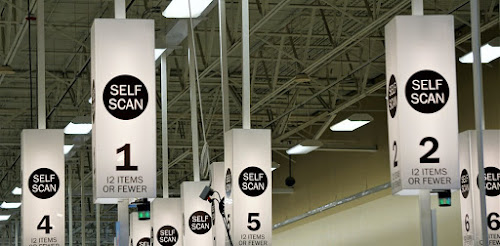Watch on your own: the self-surveillance strategy to maintain grocery store shoppers honest
Sellers have attempted many obvious strategies to limit burglary, such as indications that display pictures of CCTV video cams, risks to prosecute culprits, bag inspects, check out evaluating layers and digital security entrances.
These strategies are incredibly expensive and have cannot mark out retail burglary.
Currently grocery stores are attempting a various strategy, that is component obvious monitoring but also motivates "self-reflection" on any impulse to make use of technicalities in the nabbing and payment systems.
In late May Australian grocery store giant Woolworths verified it's trialling self-service check out terminals with integrated video cams. They display your picture as you check your items. Rival Coles began attempting the technology in April 2019.
The idea is that watching on your own check your own grocery stores will decrease the lure to steal. It's sustained by research that shows the effectiveness of hints that cause us to self-focus and self-regulate.
Retail burglary proceeds to expand
Since 1990, when the Australian Insitute of Criminology released comprehensive research on retail criminal offense and its avoidance, it has been commonly approved crime-related losses represent about 1% of all retail income. Estimates of client burglary were woolier.
In August 2019 the Australia and New Zealand Retail Criminal offense Survey turned up with a specific number. It reported total crime-related retail losses amounted to 0.92% of income. Client criminal offense was 58% of that – or 0.53% of total income. Istilah Umum Judi Bola Online

However moneyed by retail technology company Checkpoint Systems, the survey example is durable – almost a quarter of the retail industry in Australia and New Zealand. Also, the lead scientist, Emmeline Taylor, is a criminologist in the Division of Sociology at City, College of London respected for her expertise in retail criminal offense.
Costs of loss avoidance
Discussing her research in 2018, Taylor informs the tale of a significant Australian grocery store finding it was selling more carrots compared to it had in stock.
Sadly this had not been a unexpected switch to healthy and balanced consuming or a wish to increase vitamin C consumption, it was a very early sign of a brand-new kind of shoplifter. Or else honest shoppers were using the self-service check out to transact more expensive items – typically avocados – and put them through as carrots.She called these self-service check out burglars "SWIPERS" – relatively well- intentioned customers participating in routine shoplifting. As the Australia and New Zealand Retail Criminal offense Survey specifies:
Their behavior and inspirations (that are often interlinked) fall right into 4 main teams: the unintentional burglars, the switchers of tags, those compensating themselves, and those that steal because they claim to have become frustrated with the process of self-checkout (e.g. triggering notifies or purchasing age-restricted items that require assistance from a worker).

